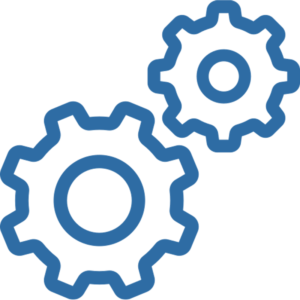![]() QUICK SUMMARY
QUICK SUMMARY
Learning agendas are an important tool for evidence-based decision-making and program management. They identify priority questions an agency or office wants to answer with evidence and data in order to strengthen its performance and improve service delivery.
![]() VIDEO OVERVIEW
VIDEO OVERVIEW
Coming soon
 STRATEGY DETAILS
STRATEGY DETAILS
Q1. What is a learning agenda?
A learning agenda is an up-and-coming tool to strengthen a culture of evidence-based decision-making within public agencies. Specifically, it’s a document developed by agency staff or with the help of external research partners that identifies an agency’s priority research questions, such as: Is Program A effective? Which version of Program B is most cost-efficient? What can we learn from existing research about initiative C’s likely effectiveness? And what operational changes might make policy D more customer-friendly?
Q2. Why are learning agendas useful?
Identifying priority research questions within a learning agenda helps agencies and their research partners, such as universities, focus their evidence-building resources on the agency’s most important challenges. Sometimes learning agendas are a list of research questions, while others proceed one question at a time.
Q3. Who uses learning agendas?
While at the federal level they’re now required of many large departments, they’re just starting to be used by state and local agencies. Examples include the Colorado Department of Public Health and Environment and several agencies in North Carolina.
Q4. What's the best way to start a learning agenda?
One might assume that the best way to start a learning agenda is just to ask agency leaders what types of research projects they think would be most useful. In practice, however, that approach can backfire. The term “research projects” can sound too slow and time-consuming — too much like an academic exercise, or more about theory than practice — to be useful for decision-makers. Also, many public officials don’t have experience thinking about formulating research projects.
A better approach, we’ve found, is to ask those leaders a simpler question: What keeps you up at night? In other words, what are the most pressing problems or challenges that the agency faces? Every leader will, most likely, have at least a few pressing issues to share, given the scope and complexity of the work that public agencies do.
Q5. What's the next step after that, in terms of developing a learning agenda?
The next step is for the staff or external partners to develop a useful research agenda that could inform those challenges. Projects might use low-cost, rapid experimentation to test operational improvements, data analysis to provide relatively quick insights from existing data, program evaluations to learn what works, or a review of evidence from prior studies to draw on what’s already known. The exact projects — and the speed of completing them — will depend, in part, on what data and internal and external resources are available to carry out the research.
Q6. What's an example of a learning agenda?
A recent example comes from North Carolina. The state’s Office of Strategic Partnerships met with leaders of the North Carolina Department of Public Safety to ask the “what keeps you up at night?” question. The discussion revealed three priority questions related to the COVID-19 pandemic.
- How can the department and its stakeholders best provide access to health care and mental health resources for offenders re-entering the community during the pandemic?
- What are best practices in prison supervision during the pandemic, including appropriate pro-social-behavior activities such as education, counseling, treatment and self-help?
- What is the impact of employment barriers created by the pandemic on ex-offenders' successful transition from prison back to their communities?
With that information in hand, the Office of Strategic Partnerships identified research teams from three North Carolina universities that were interested in helping to tackle those questions. The teams reviewed existing research and analyzed public data. (They included graduate students, helping train the next generation of policy researchers.) Within six weeks, and at no cost to the state, the researchers delivered briefs with their initial findings. The department’s leaders were able to use the findings to inform their near-term decision-making while determining whether to request more in-depth analyses.
Q7. How is using a learning agenda a continually updating process?
When one set of questions is answered within a learning agenda, new ones can be added, keeping up the cycle of learning. Moreover, those developing the learning agendas can also seek broader input, including asking program managers, external implementation partners and other stakeholders what keeps them up at night.
 ADDITIONAL RESOURCES
ADDITIONAL RESOURCES
- Brief: Evidence Toolkit: Learning Agendas by Demetra Nightingale, Keith Fudge and Will Shupmann of the Urban Institute
- Articles:
- "The Learning Agenda Every Public Agency Needs" by Andrew Feldman and Jenni Owen in Governing.
- “The Opportunity Agencies Should Seize” (on learning agendas) by Andrew Feldman in Government Executive.
 CUSTOMIZED ASSISTANCE
CUSTOMIZED ASSISTANCE
Please contact us if you need help in developing and/or using a learning agenda or your organization or learning agendas for your divisions.
![]() PDF VERSION OF THIS PAGE (click here)
PDF VERSION OF THIS PAGE (click here)
Credits: This page draws from the article "The Learning Agenda Every Public Agency Needs" by Andrew Feldman and Jenni Owen in Governing.
